https://zhuanlan.zhihu.com/p/433151653复制
本人lino,即将毕业的研究生,在此记录下学习过程。本次记录跟随是苏黎世邦理工大学的计算机体系结构课程。
当在memory中存储数据时,数据的保留是个问题,可能会丢失这个数据。因此本次内容围绕着DRAM进行深度探索,了解其数据的保持和刷新。
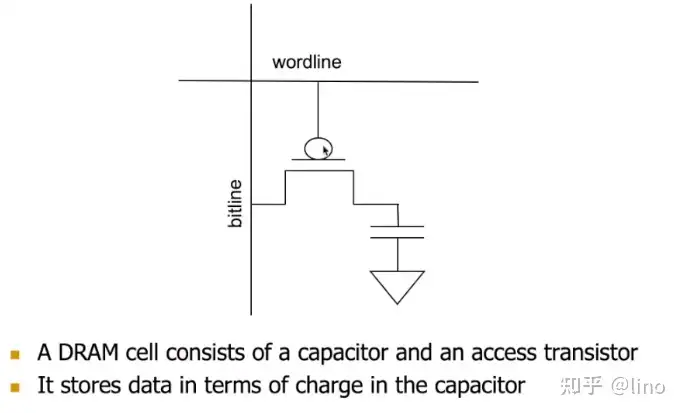
其中电容是storage device,晶体管是access device。wordline给晶体管足够的开启电压时,the charge from the capacitor gets shared through the bitline。在dram中基本的问题是the capacitor charge leaks over time问题,当不去访问时,电容和bitline之间会有rc电导使得电容里的电荷漏电,当然这只是其中一个漏电的路径,还有很多。漏电还和温度有关,高温会导致漏电更快,因此需要刷新的更快,普通情况下大概64ms刷新一次,总结下downsides of refresh。
Energy consumption:Each refresh consumes energy
Performance degradation:DRAM rank/bank unavailable while refreshed
Qos/predictability impact:(Long)pause times during refresh--(当处理器要访问memory时遇见refresh产生的脉冲会造成处理器等待延时)
Refresh rate limits DRAM capacity scaling
如果想提高DRAM的能力,one is the cells become smaller,another is putting more cells,但是refresh限制了这些。而且cell做的越小,电容能储存的电荷越少,漏电越快,并且也很容易受噪声的影响, refresh rate increases with cell density。下图是Device capacity以及所对应的refreshing,随着capacity的增加,46%的时间都用来刷新了,这就意味着处理器有46%的时间是不能访问DRAM的。
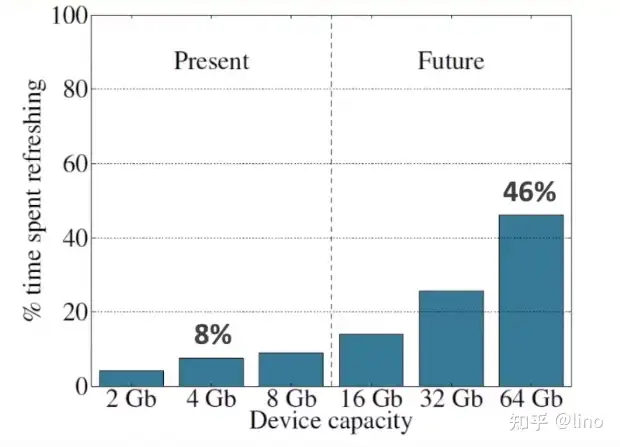
一个关键的思想就是我们在64ms时间内需要刷新所有的rows吗?引发讨论,可不可以只刷新那些处理器分配使用的rows,而没有用的就不用刷新?假设8G的dram,只有到4G,那剩下的4G部分的rows就不用刷新,答案目前还没有这么做因为,我们没有interface去通知dram controller处理器分配了哪些。然后引出
what if we knew what happened underneath (in DRAM cells) and exposed that information to upper layers?
实际上,我们不需要64ms刷新所有的cells,一部分cells存储了很多的charge,not leaky,这些cells可以保存数据tens of seconds,当然也有一部分cells是非常leaky,small的,他们不得不每64ms刷新一次。根据这个profile我们可以看出,每次64ms刷新的cell占比很小。
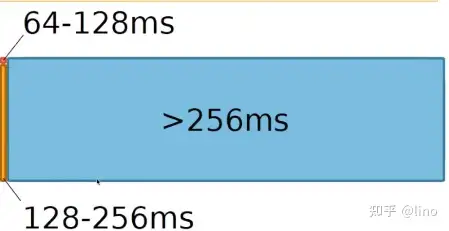
但是为什么会有这个profile呢?原因是Manufacturing is not perfect,not all DRAM cells ram exactly the same,some are more leaky than the others。这些被称作Manufacturing Process Variation。所以这是我们可以充分利用这个profile的一个机会。
在假定我们知道each row的保留时间下提出如下问题:
what can we do with this information?
who do we expose this information to?
how much information do we expose?(如果expose的多,那么进行验证的数量也变得复杂)
how do we determine this profile information ?
DRAM刷新间隔和累计cell失败可能性的关系如下:
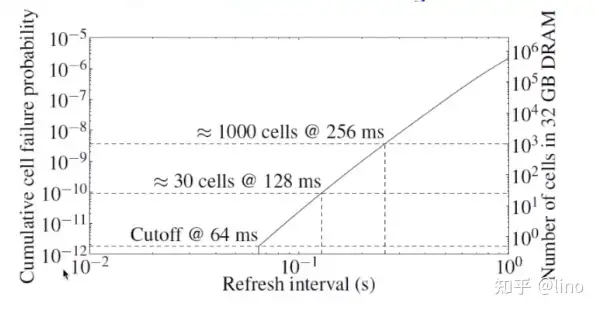
128ms刷新一次大约会有30cell失效,256ms刷新一次大约会有1000个cell失效。可以观察到overwhelming majority of DRAM rows can be refreshed much less often without losing data。
因此提出如下的方式(可参考RAIDR:retention-aware Intelligent DRAM Refresh):
1.profiling:Identify the retention time of all DRAM rows
2.binning:store rows into bins by retention time
-> use bloom filters for efficient and scalable storage
3.Refreshing:Memory Controller refreshes rows in different bins at different rates
实验结果和仿真如下。可见硬件成本,刷新率,energy等都明显减少。
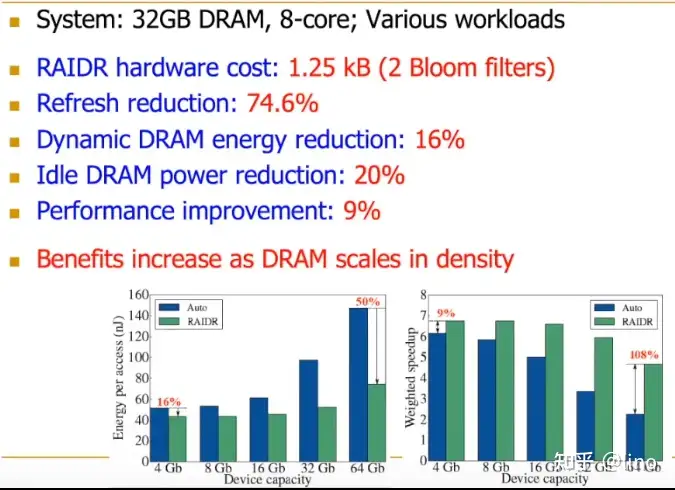
进行dig deeper:how to make RAIDR working? 具体步骤细节如下
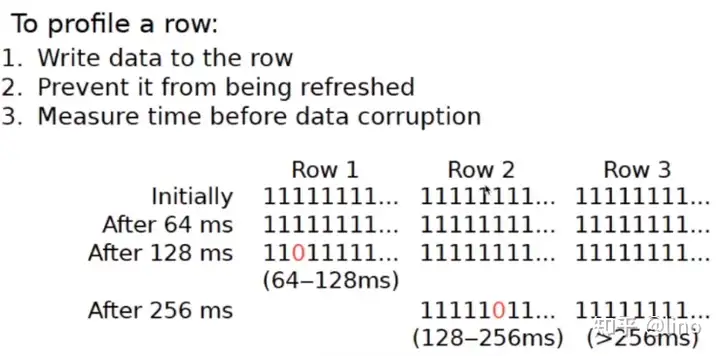
该步骤的挑战如下:
data pattern dependence of retention time
----Retention time of a DRAM cell depends on its value and the values of cells nearby it
Variable retention time phenomenon
data pattern dependence of retention time
具体解释如下:当一行被activated时,all bitlines 同时被扰乱,因为当activate a row时电容进行漏电,这导致bitlines被扰乱,这种扰乱被称作noise,这种noise将影响DRAM,同时噪声也收到附近cells值的影响。
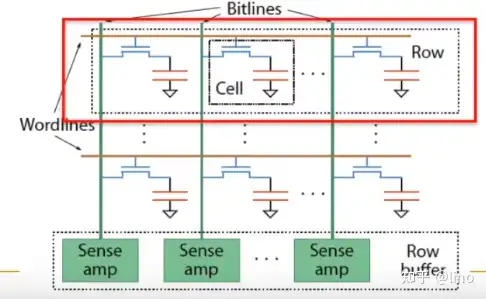
可以认为有如下连接:
Bitline-bitline coupling ->electrical coupling between adjacent bitlines
Bitline-wordling coupling ->electrical coupling between each bitline and the activated wordline
所以cell中数据的保留时间取决于data pattens stored in nearby cells。所以我们应该找出the worst data patten to find worst-case retention time。但是memory controller很难知道which bits interfere with each other,因为Opaque mapping of addresses to physical DRAM geometry,在DRAM里addresses进行了remapping,并且对于多余的将会映射到share row,remapping of faulty bitlines/wordlines。并且随着cells越来越小,这个coupling noise的model就越难建立,很不易被发现。
Variable retention time phenomenon
DRAM cell的保留时间是随机改变的,如下图。
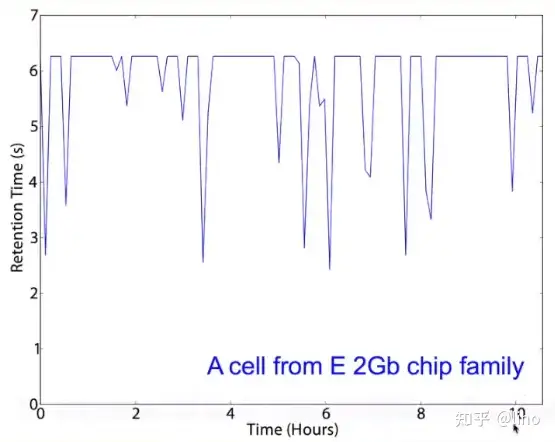
Binning
该方法是使用bloom filter。
Probabilistic data structure that compactly represents set membership(presence or absence of element in a set)
Non-approximate set membership:Use 1 bit per element to indicate absence/presence of each element from an element space of N elements
Approximate set membership:use a much smaller number of bits and indicate each element's presence/absence with a subset of thise bits
这里教授也对bloom filter进行了展开,当然这篇文章写的也很简明。
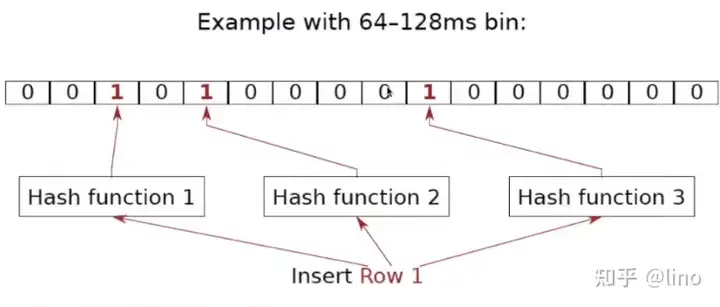
优缺点如下:
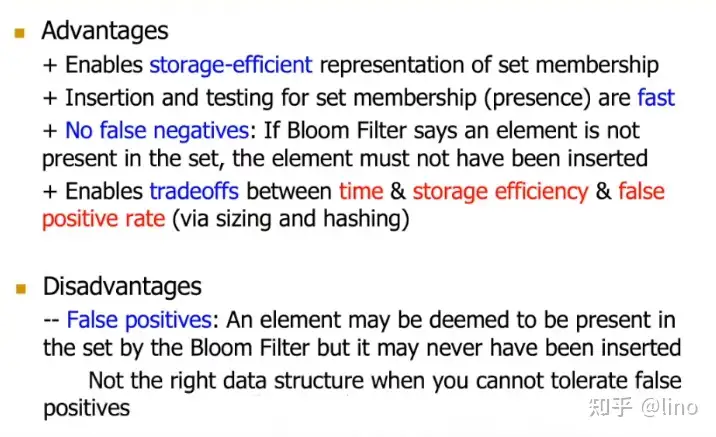
总结下RAIDR Refresh Controller:
Choose a fresh candidate row
Determin which bin the row is in
Determine if refreshing is needed
然后这是RAIDR实现的位置如下图。
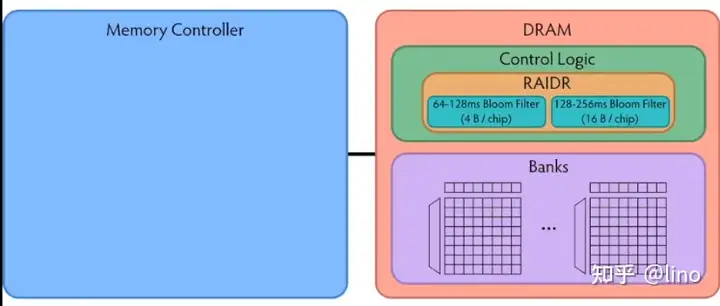
当然也可以在Memory Controller里面实现。